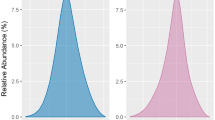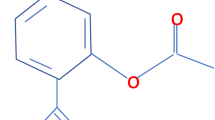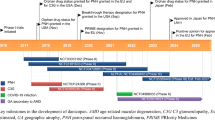Abstract
Various radioligands have been used to characterize and quantify the platelet P2Y12 receptor, which share several weaknesses: (a) they are metabolically unstable and substrates for ectoenzymes, (b) they are agonists, and (c) they do not discriminate between P2Y1 and P2Y12. We used the [3H]PSB-0413 selective P2Y12 receptor antagonist radioligand to reevaluate the number of P2Y12 receptors in intact platelets and in membrane preparations. Studies in humans showed that: (1) [3H]PSB-0413 bound to 425 ± 50 sites/platelet (K D = 3.3 ± 0.6 nM), (2) 0.5 ± 0.2 pmol [3H]PSB-0413 bound to 1 mg protein of platelet membranes (K D = 6.5 ± 3.6 nM), and (3) competition studies confirmed the known features of P2Y12, with the expected rank order of potency: AR-C69931MX > 2MeSADP ≫ ADPβS > ADP, while the P2Y1 ligand MRS2179 and the P2X1 ligand α,β-Met-ATP did not displace [3H]PSB-0413 binding. Patients with severe P2Y12 deficiency displayed virtually no binding of [3H]PSB-0413 to intact platelets, while a patient with a dysfunctional P2Y12 receptor had normal binding. Studies in mice showed that: (1) [3H]PSB-0413 bound to 634 ± 87 sites/platelet (K D = 14 ± 4.5 nM) and (2) 0.7 pmol ± 0.3 [3H]PSB-0413 bound to 1 mg protein of platelet membranes (K D = 9.1 ± 5.3 nM). Clopidogrel and other thiol reagents like pCMBS or DTT abolished the binding both to intact platelets and membrane preparations. Therefore, [3H]PSB-0413 is an accurate and selective tool for radioligand binding studies aimed at quantifying P2Y12 receptors, to identify patients with P2Y12 deficiencies or quantify the effect of P2Y12 targeting drugs.




Similar content being viewed by others
Abbreviations
- AR-C67085MX:
-
2-Propylthioadenosine-5′-adenylic acid (1,1-chloro-1-phosphonomethyl-1-phosphonyl)anhydride
- AR-C69931MX (cangrelor):
-
N 6-(2-Methylthioethyl)-2-(3,3,3-trifluoropropylthio)adenosine-5′-adenylic acid (1,1-chloro-1-phosphonomethyl-1-phosphonyl)anhydride
- [3H]PSB-0413:
-
[3H]2-Propylthioadenosine-5′-adenylic acid (1,1-chloro-1-phosphonomethyl-1-phosphonyl)anhydride
- PSB-0412 (precursor of [3H]PSB-0413):
-
2-Propargylthioadenosine-5′-adenylic acid (1,1-chloro-1-phosphonomethyl-1-phosphonyl)anhydride
- MRS2179:
-
N 6-Methyl-2′-deoxyadenosine-3′,5′-bisphosphate
- MRS2500:
-
2-Iodo-N 6-methyl-(N)-methanocarba-2′-deoxyadenosine-3′,5′-bisphosphate)
- pCMBS:
-
para-Chloromercuribenzene sulfonic acid
References
Gachet C (2006) Regulation of platelet functions by P2 receptors. Annu Rev Pharmacol Toxicol 46:277–300
Savi P, Herbert JM (2005) Clopidogrel and ticlopidine: P2Y12 adenosine diphosphate-receptor antagonists for the prevention of atherothrombosis. Semin Thromb Hemost 31(2):174–183
Cattaneo M (2010) New P2Y(12) inhibitors. Circulation 121(1):171–179
Cattaneo M (2011) Bleeding manifestations of congenital and drug-induced defects of the platelet P2Y12 receptor for adenosine diphosphate. Thromb Haemost 105(Suppl 1):S67–74
Lips JP, Sixma JJ, Schiphorst ME (1980) Binding of adenosine diphosphate to human blood platelets and to isolated blood platelet membranes. Biochim Biophys Acta 628(4):451–467
Cattaneo M, Lecchi A, Randi AM, McGregor JL, Mannucci PM (1992) Identification of a new congenital defect of platelet function characterized by severe impairment of platelet responses to adenosine diphosphate. Blood 80(11):2787–2796
Jefferson JR, Harmon JT, Jamieson GA (1988) Identification of high-affinity (Kd 0.35 mumol/L) and low-affinity (Kd 7.9 mumol/L) platelet binding sites for ADP and competition by ADP analogues. Blood 71(1):110–116
Savi P, Laplace MC, Maffrand JP, Herbert JM (1994) Binding of [3H]-2-methylthio ADP to rat platelets—effect of clopidogrel and ticlopidine. J Pharmacol Exp Ther 269(2):772–777
Macfarlane DE, Srivastava PC, Mills DC (1983) 2-Methylthioadenosine[beta-32P]diphosphate. An agonist and radioligand for the receptor that inhibits the accumulation of cyclic AMP in intact blood platelets. J Clin Invest 71(3):420–428
Macfarlane DE (1992) 2-Methylthioadenosine [beta-32P]diphosphate: synthesis and use as probe of platelet ADP receptors. Methods Enzymol 215:137–142
Gachet C, Cattaneo M, Ohlmann P, Hechler B, Lecchi A, Chevalier J, Cassel D, Mannucci PM, Cazenave JP (1995) Purinoceptors on blood platelets: further pharmacological and clinical evidence to suggest the presence of two ADP receptors. Br J Haematol 91(2):434–444
Baurand A, Raboisson P, Freund M, Leon C, Cazenave JP, Bourguignon JJ, Gachet C (2001) Inhibition of platelet function by administration of MRS2179, a P2Y1 receptor antagonist. Eur J Pharmacol 412(3):213–221
Jacobson KA, Boeynaems JM (2010) P2Y nucleotide receptors: promise of therapeutic applications. Drug Discov Today 15(13–14):570–578
Houston D, Ohno M, Nicholas RA, Jacobson KA, Harden TK (2006) [32P]2-Iodo-N6-methyl-(N)-methanocarba-2′-deoxyadenosine-3′,5′-bisphosphat e ([32P]MRS2500), a novel radioligand for quantification of native P2Y1 receptors. Br J Pharmacol 147(5):459–467
Ohlmann P, de Castro S, Brown GG Jr, Gachet C, Jacobson KA, Harden TK (2010) Quantification of recombinant and platelet P2Y(1) receptors utilizing a [(125)I]-labeled high-affinity antagonist 2-iodo-N(6)-methyl-(N)-methanocarba-2′-deoxyadenosine-3′,5′-bisphosphate ([(125)I]MRS2500). Pharmacol Res 62(4):344–351
El-Tayeb A, Griessmeier KJ, Muller CE (2005) Synthesis and preliminary evaluation of [3H]PSB-0413, a selective antagonist radioligand for platelet P2Y12 receptors. Bioorg Med Chem Lett 15(24):5450–5452
Baqi Y, Atzler K, Kose M, Glanzel M, Muller CE (2009) High-affinity, non-nucleotide-derived competitive antagonists of platelet P2Y12 receptors. J Med Chem 52(12):3784–3793
Cattaneo M, Lecchi A, Lombardi R, Gachet C, Zighetti ML (2000) Platelets from a patient heterozygous for the defect of P2CYC receptors for ADP have a secretion defect despite normal thromboxane A2 production and normal granule stores: further evidence that some cases of platelet ‘primary secretion defect’ are heterozygous for a defect of P2CYC receptors. Arterioscler Thromb Vasc Biol 20(11):E101–106
Cattaneo M, Zighetti ML, Lombardi R, Martinez C, Lecchi A, Conley PB, Ware J, Ruggeri ZM (2003) Molecular bases of defective signal transduction in the platelet P2Y12 receptor of a patient with congenital bleeding. Proc Natl Acad Sci USA 100(4):1978–1983
Cattaneo M (2011) The platelet P2Y receptor for adenosine diphosphate: congenital and drug-induced defects. Blood 117(7):2102–2112
Cazenave JP, Ohlmann P, Cassel D, Eckly A, Hechler B, Gachet C (2004) Preparation of washed platelet suspensions from human and rodent blood. Methods in Mol Biol (Clifton NJ 272:13–28
Kauffenstein G, Hechler B, Cazenave JP, Gachet C (2004) Adenine triphosphate nucleotides are antagonists at the P2Y receptor. J Thromb Haemost 2(11):1980–1988
Barber AJ, Jamieson GA (1970) Isolation and characterization of plasma membranes from human blood platelets. J Biol Chem 245(23):6357–6365
Broekman MJ (1992) Homogenization by nitrogen cavitation technique applied to platelet subcellular fractionation. Methods Enzymol 215:21–32
Munson PJ, Rodbard D (1980) Ligand: a versatile computerized approach for characterization of ligand-binding systems. Anal Biochem 107(1):220–239
Cristalli G, Mills DC (1993) Identification of a receptor for ADP on blood platelets by photoaffinity labelling. Biochem J 291(Pt 3):875–881
Ding Z, Kim S, Dorsam RT, Jin J, Kunapuli SP (2003) Inactivation of the human P2Y12 receptor by thiol reagents requires interaction with both extracellular cysteine residues, Cys17 and Cys270. Blood 101(10):3908–3914
Margaritis A, Priora R, Frosali S, Di Giuseppe D, Summa D, Coppo L, Di Stefano A, Di Simplicio P (2011) The role of protein sulfhydryl groups and protein disulfides of the platelet surface in aggregation processes involving thiol exchange reactions. Pharmacol Res 63(1):77–84
Gachet C (2008) P2 receptors, platelet function and pharmacological implications. Thromb Haemost 99(3):466–472
Baurand A, Eckly A, Bari N, Leon C, Hechler B, Cazenave JP, Gachet C (2000) Desensitization of the platelet aggregation response to ADP: differential down-regulation of the P2Y1 and P2cyc receptors. Thromb Haemost 84(3):484–491
Baurand A, Eckly A, Hechler B, Kauffenstein G, Galzi JL, Cazenave JP, Leon C, Gachet C (2005) Differential regulation and relocalization of the platelet P2Y receptors after activation: a way to avoid loss of hemostatic properties? Mol Pharmacol 67(3):721–733
Hardy AR, Conley PB, Luo J, Benovic JL, Poole AW, Mundell SJ (2005) P2Y1 and P2Y12 receptors for ADP desensitize by distinct kinase-dependent mechanisms. Blood 105(9):3552–3560
Mundell SJ, Luo J, Benovic JL, Conley PB, Poole AW (2006) Distinct clathrin-coated pits sort different G protein-coupled receptor cargo. Traffic (Copenhagen, Denmark) 7(10):1420–1431
Hoffmann C, Ziegler N, Reiner S, Krasel C, Lohse MJ (2008) Agonist-selective, receptor-specific interaction of human P2Y receptors with beta-arrestin-1 and −2. J Biol Chem 283(45):30933–30941
Nisar S, Daly ME, Federici AB, Artoni A, Mumford AD, Watson SP, Mundell SJ (2011) An intact PDZ motif is essential for correct P2Y12 purinoceptor traffic in human platelets. Blood 118(20):5641–5651
Schaff M, Receveur N, Bourdon C, Ohlmann P, Lanza F, Gachet C, Mangin P (2012) beta-Arrestin-1 participates in thrombosis and regulates integrin alphaIIb-beta3 signalling without affecting P2Y receptors desensitization and function. Thromb Haemost 107:735–748
Fontana P, Dupont A, Gandrille S, Bachelot-Loza C, Reny JL, Aiach M, Gaussem P (2003) Adenosine diphosphate-induced platelet aggregation is associated with P2Y12 gene sequence variations in healthy subjects. Circulation 108(8):989–995
Fontana P, Gaussem P, Aiach M, Fiessinger JN, Emmerich J, Reny JL (2003) P2Y12 H2 haplotype is associated with peripheral arterial disease: a case–control study. Circulation 108(24):2971–2973
Fontana P, Remones V, Reny JL, Aiach M, Gaussem P (2005) P2Y1 gene polymorphism and ADP-induced platelet response. J Thromb Haemost 3(10):2349–2350
Bierend A, Rau T, Maas R, Schwedhelm E, Boger RH (2008) P2Y12 polymorphisms and antiplatelet effects of aspirin in patients with coronary artery disease. Br J Clin Pharmacol 65(4):540–547
Staritz P, Kurz K, Stoll M, Giannitsis E, Katus HA, Ivandic BT (2009) Platelet reactivity and clopidogrel resistance are associated with the H2 haplotype of the P2Y12-ADP receptor gene. Int J Cardiol 133(3):341–345
Cattaneo M (2011) Molecular defects of the platelet P2 receptors. Purinergic signal 7(3):333–339
Macfarlane DE (1981) The effects of methyl mercury on platelets: induction of aggregation and release via activation of the prostaglandin synthesis pathway. Mol Pharmacol 19(3):470–476
Burnstock G (2007) Physiology and pathophysiology of purinergic neurotransmission. Physiol Rev 87(2):659–797
Author information
Authors and Affiliations
Corresponding author
Additional information
A. El-Tayeb is on leave from the University of Al-Azhar, Assiut, Egypt.
Rights and permissions
About this article
Cite this article
Ohlmann, P., Lecchi, A., El-Tayeb, A. et al. The platelet P2Y12 receptor under normal and pathological conditions. Assessment with the radiolabeled selective antagonist [3H]PSB-0413. Purinergic Signalling 9, 59–66 (2013). https://doi.org/10.1007/s11302-012-9329-0
Received:
Accepted:
Published:
Issue Date:
DOI: https://doi.org/10.1007/s11302-012-9329-0




